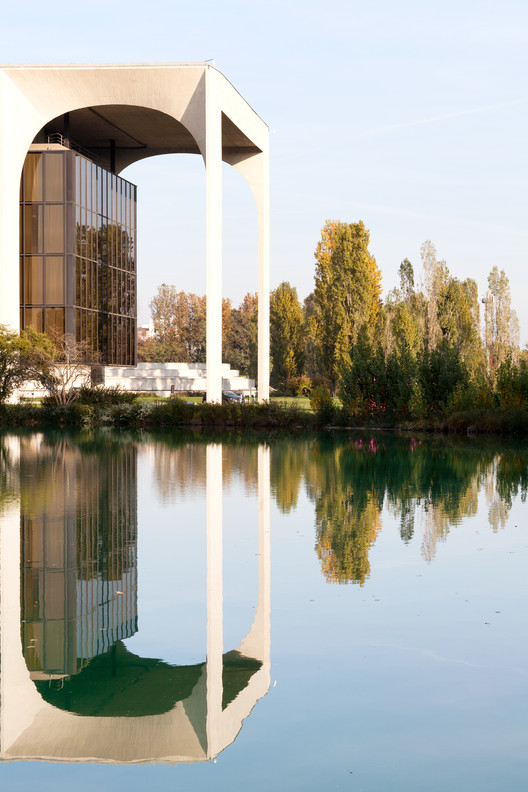
As a trailblazer of Brazilian Modernism, Oscar Niemeyer is celebrated for his bold, sinuous forms, and his use of the “the liberated, sensual curve.” Paul Goldberger described it best when he wrote that “Niemeyer didn’t compromise modernism’s utopian ideals, but when filtered through his sensibility, the stern, unforgiving rigor of so much European modernism became as smooth as Brazilian jazz.”
When Georgio Mondadori, chairman of the Italian publishing house Mondadori, commissioned Niemeyer to design the company’s new headquarters in 1968, he wanted the building to look like the Itamaraty Palace (also known as Palace of the Arches) in Brasília. Niemeyer agreed, but given his playful spirit, he deliberately deviated from the earlier design and proceeded to build what he would later identify as his favorite of the projects he completed in Europe. Read on to see a striking set of sixteen photographs of the Mondadori building by Milan-based photographer and visual artist Karina Castro, who was commissioned by Mondadori to capture their headquarters over 40 years after the building's completion.

“[…] whoever goes to see the Mondadori headquarters remains astonished because nobody has ever seen a colonnade in which the arches are different from each other” elaborated Niemeyer in an interview, as he talked about the importance of, and his love for, the element of surprise in architecture.

The central concrete volume and its colonnades along with the two adjacent sweeping volumes are reflected in the surrounding pool, and this is perhaps what the photographer’s eye delights in most when capturing Niemeyer’s beloved building—most, if not all of Castro’s remarkable photographs play with the building’s several planes, volumes, geometries and reflections.

Perhaps it is the design of this building, rather than the Itamaraty Palace, which best embodies what the word “itamaraty” roughly translates as: “river of small stones.” By simply using varying spans for each of the arches, the architect breathes life into the colonnade; what was previously static acquires, in Niemeyer's words, something akin to "musical rhythm."


For more on Oscar Niemeyer’s life and work, check out our previous collection of articles here.


















